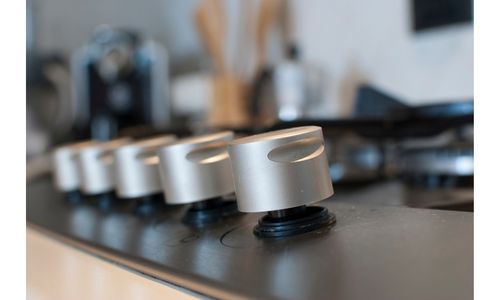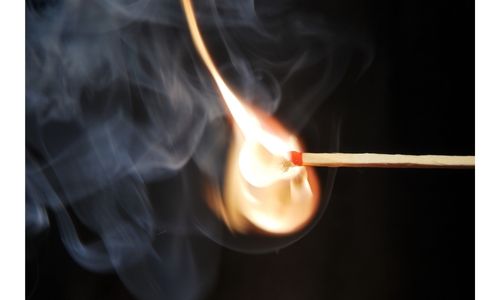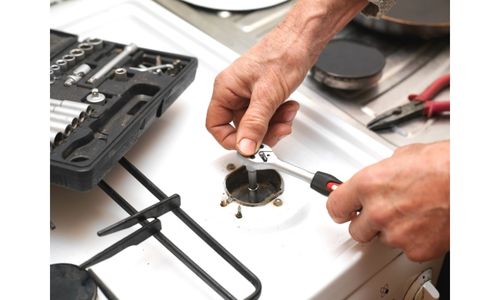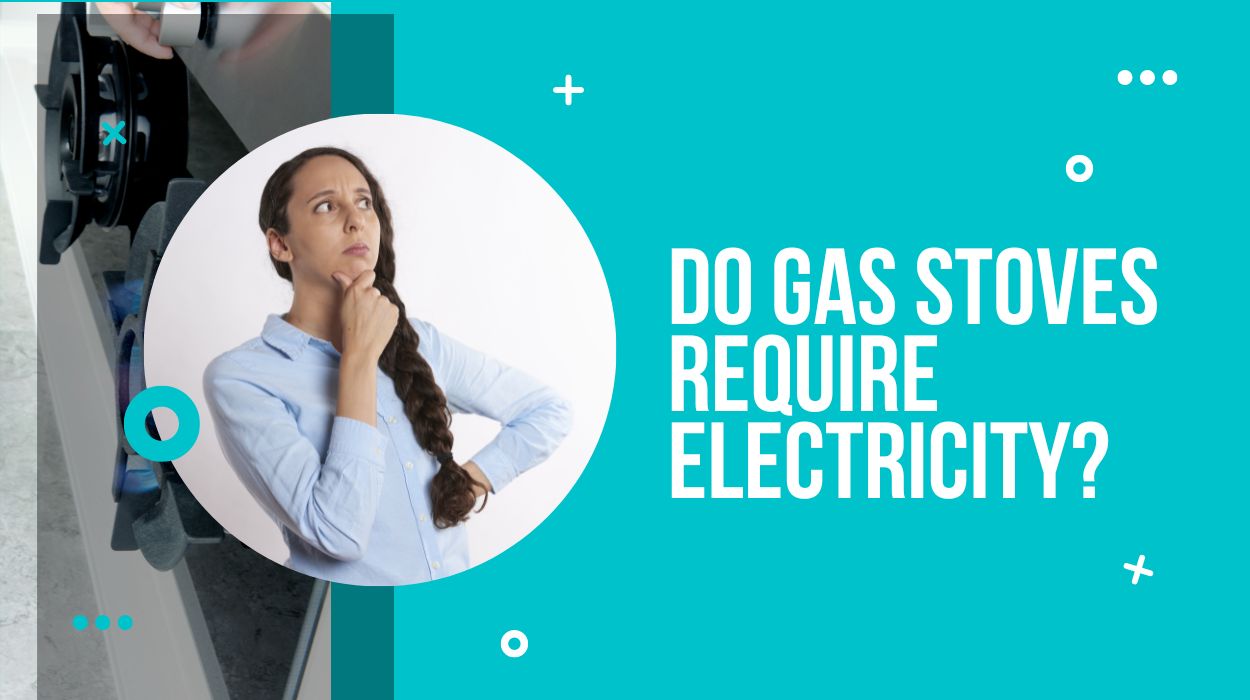Suppose there is a power cut in your locality, and you must prepare dinner. Now, you’re wondering if you could still ignite your gas stove to cook food. The answer is – YES!
While traditional gas ranges don’t require electricity to operate, most modern gas stoves have an electric ignition system.
Therefore, if there’s no electricity, an electric stove will not stop functioning. But you will need to light it by hand using a lighter or a matchstick.
Keep scrolling down because, in this article, we will explain how to ignite your stove without electricity and the technical difference between gas and electric stoves.
Why Does A Gas Stove Need Electricity?
Most advanced gas ranges operate on electricity. You probably heard a ‘click’ while lighting a gas burner. This is the sound of the electric lights of the burner creating sparks.
The spark turns on the gas, and a flame pops up. However, no electricity means no spark, and the burner won’t light up. If this happens, you will need to manually turn on the stove.
While traditional gas ranges allow gas flow and can still operate during power cuts, modern stoves have valves that prohibit gas flow if there’s no electricity.
Will a Gas Stove Work Without Electricity?
Now that you know that electric gas ranges don’t operate without electricity, what do to during a power outage?
The good news is that your electric stove can still function even if there’s no electricity in your area. But you should know how to ignite it.
You can do this by manually lighting your electric stove with a matchstick or an igniter. It is the easiest way!
Bypassing Electric-Ignition Stove Burners During an Outage
Follow these simple steps to bypass the electric ignition if there’s a power cut:
- Use a torch or your phone’s flashlight to see the stove, as it will be very dark.
- Then, turn off all the knobs of your stove.
- Keep the flashlight somewhere near the stove so that the light is directed to your stove’s burners.
- Light a matchstick and hold it around the burner’s center (where the holes are located).
- Keep holding the match and turn your burner’s know to a low setting.
- Move your hand away once the blue flame pops up. It could take around 2-3 seconds for the flame to appear.
Will Gas & Propane Stoves Still Work Without Electricity?
Yes, most traditional gas and propane stoves can still function without electricity. However, you will have to ignite them manually with a lighter/matchstick.
So if there’s a power cut and you want to check if your propane/gas stove will function, just rotate the burner’s knob for 2-3 seconds. You will hear the hissing sound of the gas/propane.
Then, take a matchstick /lighter to light the stove. When you see the flame appear, rotate the knob to adjust it.
However, if there’s no gas supply to your stove, take a 12-volt battery and plug it into your inverter. Then, connect the stove to the inverter. Now, there will be sufficient electricity to supply gas to the burner and light up your stove.
Will I Still have Natural Gas for my Stove when the Power Goes Out?
To control the pressure of the natural gas and help it flow to the gas pipelines, electricity is needed.
However, a majority of the natural gas centers operate on natural gas and, thus, don’t require electricity.
Also, some gas centers have generator systems, due to which their operation isn’t disrupted even during a power cut.
So without a major fault with the pipeline or a natural calamity such as an earthquake occurring (due to which the pipelines under the ground get disrupted), you will continue to have a natural gas supply to your stove during a power outage.
Will I Still have Propane for my Stove if the Power is Out?
Yes, your propane gas supply won’t get disrupted if there’s a power cut in your locality.
The reason behind this is that propane is supplied to your stove through pipelines that are buried deep under the ground.
That’s why strong winds, road traffic, etc., won’t affect the propane gas supply.
However, if the pipelines get clogged, then your supply of gas will most likely be disrupted.
How do I Light my Stove Without Electricity?
Here are 3 simple ways to turn on a stove without electricity:
1. Using an Igniter
Nowadays, most electric stoves come with a separate igniter. To light an electric stove, you must push the burner with one hand and rotate its knob with your other hand.
Since the igniter operates on electricity, a spark will be created to light the flame. A clicking sound will be produced. This means that your burner has turned on.
You can increase or decrease the height of the flame by turning the burner in a clockwise /anti-clockwise direction.
2. Using Knobs With Built-In Igniters
Besides a separate ignitor, modern electric stoves are also equipped with a built-in ignitor for each burner knob.
You must hear a clicking sound when you rotate one of the burner knobs, indicating that the stove has lit.
Then, rotate the knob until you see the flame pop up. Initially, the flame will be high. To lower the flame, you will have to rotate the knob.
Authors Note: If your igniter isn’t working properly, it means that it is clogged. Therefore, we recommend you mix equal parts of water and baking soda, and with the help of toothpaste, clean your igniter.
3. Lighting a Stove With Matches
Most of the traditional gas stove models can be as lighted with a matchstick. As compared to lighters, match sticks are safer and easier to use. You must always use long matchsticks to prevent your hand from burning.
However, when using a match, we advise you to first light the ignition flame before starting your gas stove because it will be safer.
Then, turn on your gas stove and light the matchstick. Bring it as close as possible to the burner and wait for 2-3 seconds until the flame appears.
Once the stove has lit, immediately move your hand away so that you don’t end up burning it.
While traditional gas ranges use a pilot light to light the stove. Most modern gas stoves are ignited by electric ignition. Here’s the technical difference between the two ignition systems:
| Gas Pilot Light System | Electric Ignition System |
| Use a pilot light to ignite the stove | Uses electricity to operate. |
| In this system, there is a small burner & a thermocouple. | Completes an electrical circuit to turn on the electric stove. |
| Thermocouple detects the heat and sends current to the gas valve to light the burner. | Lights the burner by sending electric sparks. |
| Current stops flowing when the flame is extinguished. | Circuit is broken once the stove is turned off. |
Gas Pilot Light System
A pilot light is a small flame of liquified petroleum gas that keeps burning to lit the stove. In a gas pilot light system, there is a small burner, a thermocouple (devices that sense temperature), and gas valves.
As soon as you start the stove, the heat from the burner is detected by the thermocouple and sends a current to the valve. This current ignites the gas valve and supplies gas to the burner.
As long as the thermocouple detects the heat from the pilot burner, the flame remains. However, once the flame is extinguished, the current stops and the gas valve shuts down.
Electric Ignition System
Electric ignition systems use electricity to operate. They light the burner by sending electric sparks. It’s the clicking sound you hear when you turn on an electric stove.
In an electric ignition system, when you turn on the gas stove, an electrical circuit is completed. This current lights an electric heating element through a thermocouple.
When the temperature of this heating element rises, gas flows to the stove, and the flame pops up.
However, when you turn off the stove, the electric circuit is broken, and the gas stops flowing. This prevents gas from being wasted or building up in your kitchen.
FAQs
1. How much electricity does a gas stove use?
Depending on their size, gas stoves can consume between 1,000-3,000 watts of electricity. If you cook on a small burner, it will use around 1200 watts of electricity.
Moreover, if your stove has a medium-sized burner, it will use between 1500-1800 watts of electricity. Furthermore, large burners use 3000 watts of electricity.
2. Can I get carbon monoxide poisoning from a pilot light?
Normally, a pilot light has a blue flame and a yellow tip. However, a poorly adjusted pilot light can have a yellow or orange color. This indicates that the light is producing carbon monoxide, a deadly gas.
A few symptoms of carbon monoxide poisoning are vomiting, nausea, dizziness, stomach cramps, fever, etc.
3. Do gas stoves operate during power cuts?
Most of the traditional gas ranges can be ignited even during a power outage.
You can easily light the surface burner with the help of a matchstick or a lighter.
However, some modern gas ranges don’t operate without electricity. They consist of a safety valve that turns off without electricity.
4. Which stove is better, gas or electric?
Nowadays, most chefs prefer gas stoves over electric ones as the former provides easy temperature control. They are easy to use.
However, electric stoves heat up faster and reduce cooking time. They are also relatively cheaper and safer to use. Moreover, they keep your kitchen cooler.
Conclusion
In conclusion, most modern gas stoves require electricity to light the burners and produce a flame.
However, your stove will not stop working if there are frequent power cuts in your area.
You can also leave the light on your gas stove by using a matchstick, an igniter, or taking advantage of the built-in igniter of your gas stove. Just follow the steps that we have mentioned above in this article.
If you have any other questions related to gas stoves, type them in the comment section below. We will try to answer you as soon as possible!
Stay safe!
